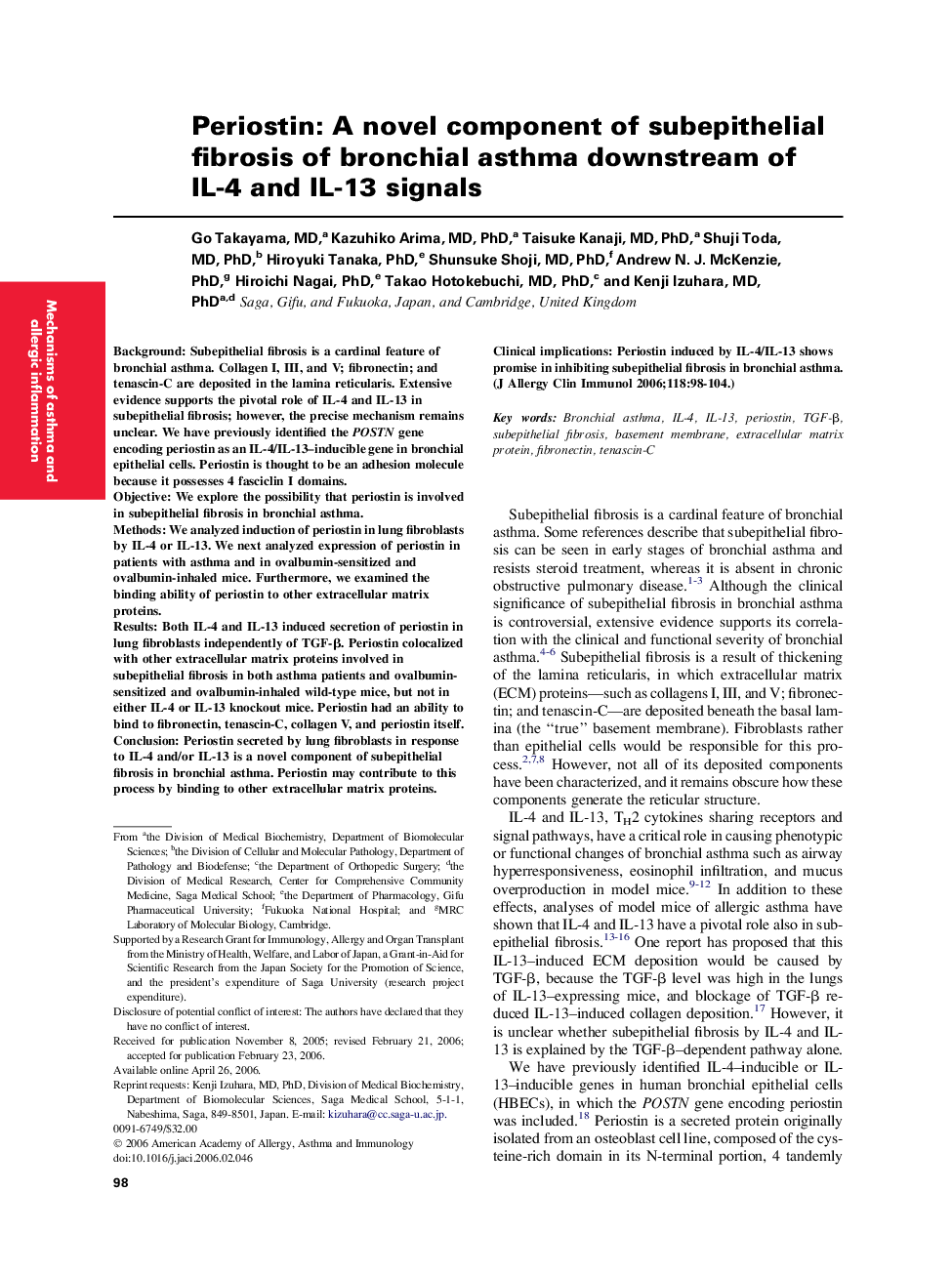| Article ID | Journal | Published Year | Pages | File Type |
|---|---|---|---|---|
| 3202495 | Journal of Allergy and Clinical Immunology | 2006 | 7 Pages |
BackgroundSubepithelial fibrosis is a cardinal feature of bronchial asthma. Collagen I, III, and V; fibronectin; and tenascin-C are deposited in the lamina reticularis. Extensive evidence supports the pivotal role of IL-4 and IL-13 in subepithelial fibrosis; however, the precise mechanism remains unclear. We have previously identified the POSTN gene encoding periostin as an IL-4/IL-13–inducible gene in bronchial epithelial cells. Periostin is thought to be an adhesion molecule because it possesses 4 fasciclin I domains.ObjectiveWe explore the possibility that periostin is involved in subepithelial fibrosis in bronchial asthma.MethodsWe analyzed induction of periostin in lung fibroblasts by IL-4 or IL-13. We next analyzed expression of periostin in patients with asthma and in ovalbumin-sensitized and ovalbumin-inhaled mice. Furthermore, we examined the binding ability of periostin to other extracellular matrix proteins.ResultsBoth IL-4 and IL-13 induced secretion of periostin in lung fibroblasts independently of TGF-β. Periostin colocalized with other extracellular matrix proteins involved in subepithelial fibrosis in both asthma patients and ovalbumin-sensitized and ovalbumin-inhaled wild-type mice, but not in either IL-4 or IL-13 knockout mice. Periostin had an ability to bind to fibronectin, tenascin-C, collagen V, and periostin itself.ConclusionPeriostin secreted by lung fibroblasts in response to IL-4 and/or IL-13 is a novel component of subepithelial fibrosis in bronchial asthma. Periostin may contribute to this process by binding to other extracellular matrix proteins.Clinical implicationsPeriostin induced by IL-4/IL-13 shows promise in inhibiting subepithelial fibrosis in bronchial asthma.
